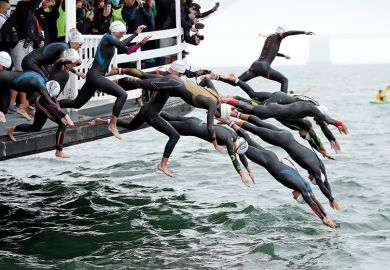Australasian universities are global outliers in that they employ more higher education professionals than academics – a distinctiveness which also features high shares of international students and low staffing levels overall.
Administrative workers comprise 59 per cent of employees at New Zealand’s eight universities, a new analysis has found. Professional staff also predominate in Australia, making up 55 per cent of the university workforce. This is the inverse of the UK and US, where about 55 per cent are academics.
Despite this, British and American universities employ considerably more administrators on a per-student basis, with one non-academic staff member for every five students in the US and for every 11 students in the UK. This compares with ratios of one to 18 in New Zealand and one to 24 in Australia.
“One thing you might conclude from our report is that Australian and New Zealand universities have too many non-academics,” said co-author James Kierstead, a senior lecturer in Classics at Victoria University of Wellington. “Another thing you might conclude is that Australian and New Zealand universities don’t have enough academics, or that they have too many students.”
The report – published by the New Zealand Initiative thinktank, where Dr Kierstead moonlights as a research fellow – does not attempt to explain the bias towards administrative staff.
“We just wanted to put the figures out there,” he said. “We’re trying to say in the public sphere, ‘Why do we have so many non-academics?’ We don’t know the answer.”
One possible explanation is that universities are forced to hire ever more professional staff to meet accountability requirements imposed through “neoliberal” policies. Another is that the “soft bottom line” of likely government bailouts, should universities find themselves in serious financial trouble, cultivates a culture of profligate spending.
But with similar factors at play in the US and UK, Dr Kierstead said it was a “mystery” why Australia and New Zealand universities were so different. Studies identify only Iceland as having a higher share of non-academic staff, he said.
Another possibility is that battalions of administrative staff are needed to help recruit and manage international students, who comprise unusually high proportions of Australasian enrolments. The study cites figures suggesting that the two countries have the world’s highest numbers of overseas students per capita – 11 per 1,000 in New Zealand and 18 per 1,000 in Australia.
Dr Kierstead said the main increase in New Zealand universities’ administrative ranks had been in an “amorphous” category known as “advisory and general support staff”. Over the past two decades, the proportions of “hands-on” workers like technicians and librarians had halved.
He said universities were hiring increasingly highly educated people, including in non-academic roles, as “blue collar” functions like lab support, trades and cleaning were outsourced. “You end up with…this very homogeneous upper-middle-class group [who], for whatever reason, seem to be very good at giving jobs to people who are like them.”
Dr Kierstead said the apparent acceptance of this trend was ironic in a sector noted for its devotion to social justice. “From a leftist perspective, there should be some movement to reincorporate those people in the community,” he said.
“It’s almost like a class thing. They want to hire more managers and such because they see themselves as managers. They don’t necessarily see themselves [as comparable to] these people doing more humble things.”




